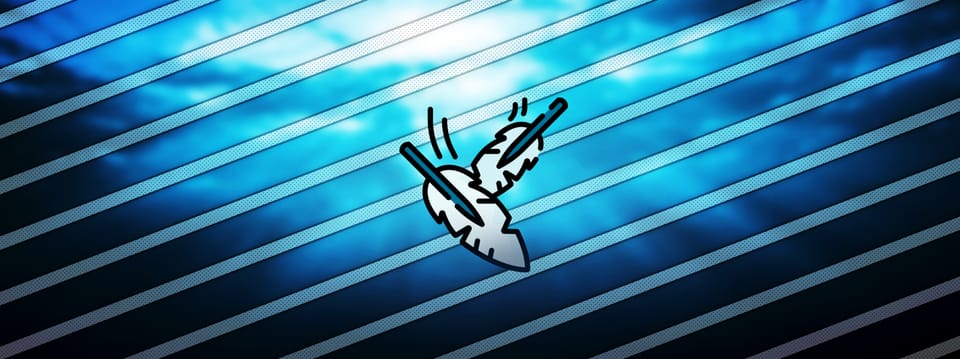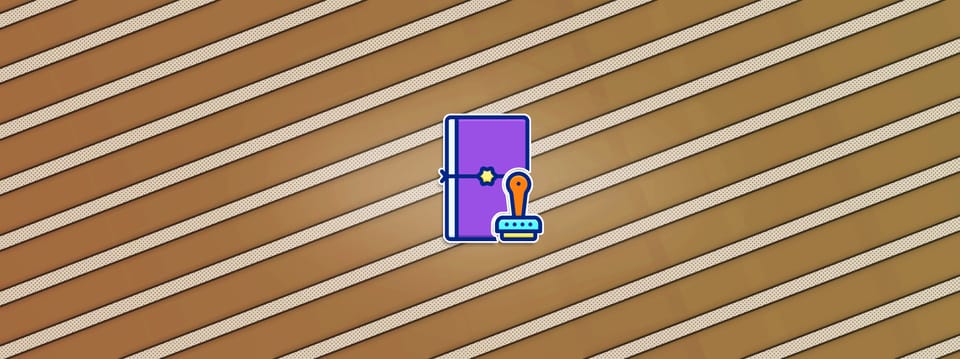How To Win An Emmy
In 2019 our team at DNEG won an Emmy for the HBO series Chernobyl. Here is how we made it happen...

Backstory
In 2019 our team at DNEG won the Emmy Award for Outstanding Special Visual Effects in a Supporting Role for the HBO series Chernobyl.
I was one of the Lead Compositors on the show, and was responsible for overseeing a team of 12 compositors. DNEG produced a wide variety of visual effects across ~550 VFX shots for the series. We created everything from the expansive Chernobyl environment including the massive nuclear reactor and explosion, to the tense helicopter missions, the nail-biting 90 second rooftop liquidators scene, and all the way to the less glamorous work involved in maintaining authenticity. The truly invisible visual effects that viewers would hopefully not even think to question, such as replacing modern street signs, windows and cars. Or even, adding digital pubic hair to the actors playing the miners who were tunnelling under the reactor naked. (Manscaping wasn't as common back in the 80's as it is now). So there certainly was a range of different challenges.
Our focus was on creating photo realistic visual effects to compliment the fantastic storytelling by the writer Craig Mazin and his team, and making sure every shot looked as authentic as possible – as if it were taking place in the Soviet Union in 1986. An immense amount of scientific research and real world reference study went into the project, enabling us to lift the visuals to a whole new level and emphasise the story.
And it paid off: Chernobyl’s storytelling and visuals resonated with audiences worldwide and it became the highest rated TV show of all time on IMDb:
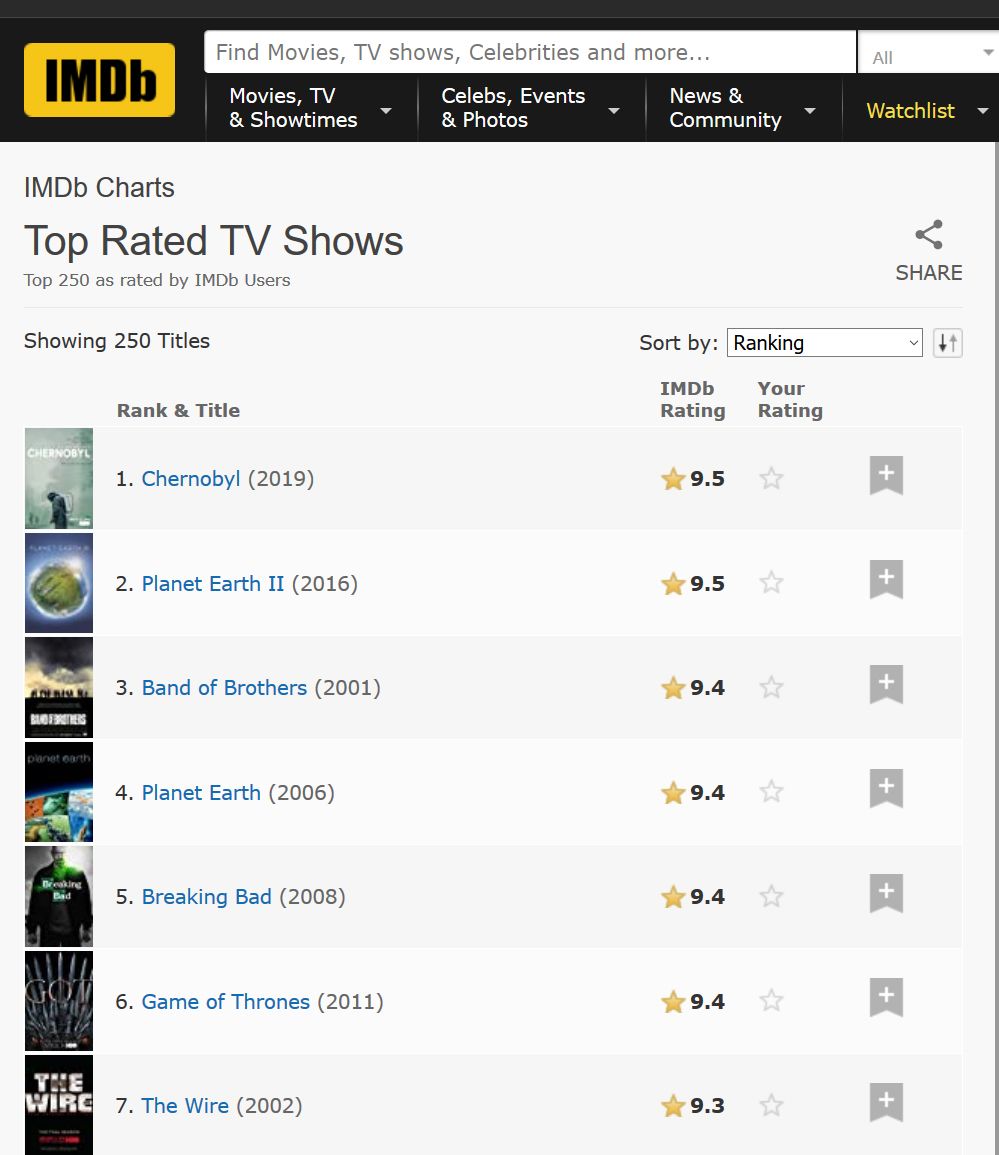
Note: It has since dropped down in the rankings but remains in the top 5 as of the time of writing.
After the amazing audience reception, Chernobyl went on to receive 19 nominations and win 10 awards at the Emmys, including the 2019 Emmy Award for Outstanding Special Visual Effects in a Supporting Role. We were ecstatic. All our hard work was rewarded with industry recognition, beautiful winged statuettes (for the supervisors), and official certificates.
This is what the Emmy Award looks like up close:
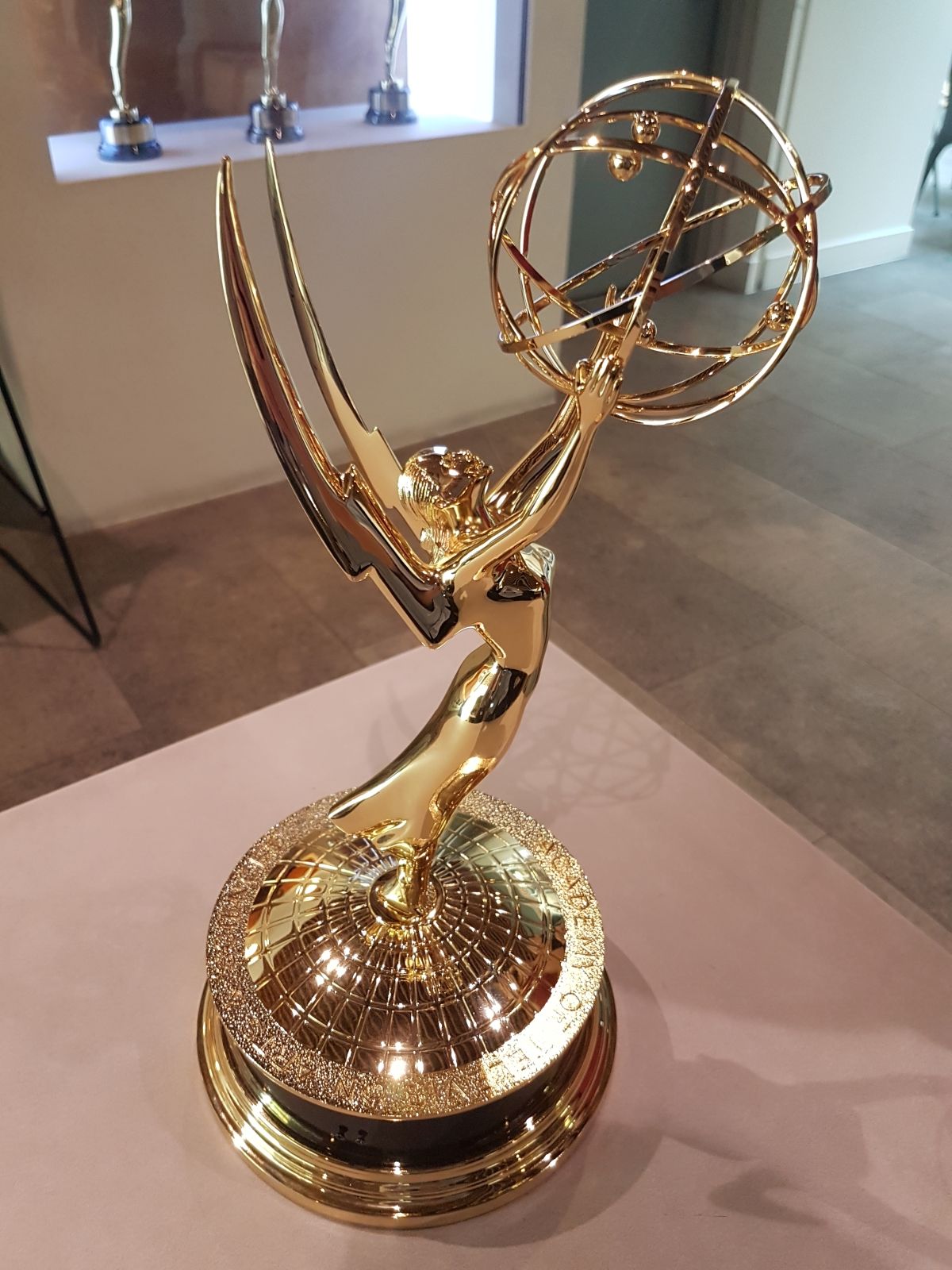
Fun fact: The Emmy is holding an atom representing the electron of science and her wings represent the muse of art, according to the official Emmys website.
And this is what the official certificate looks like:
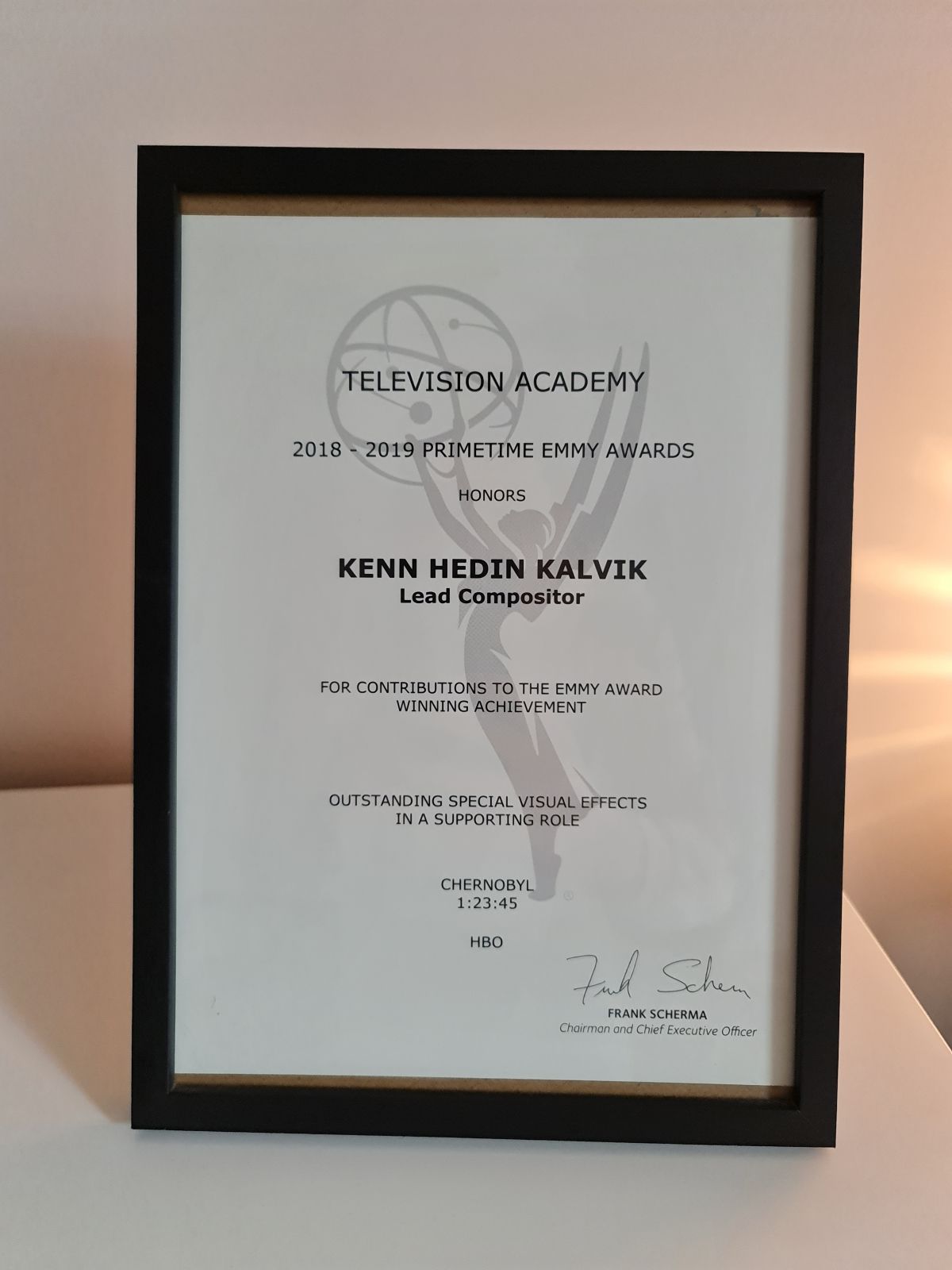
Side note: Because the certificates are issued in Los Angeles, they are printed on US Letter instead of the more common A4 paper sheets used here in Europe. Therefore, they are wider (215.9 mm vs. 210 mm) and shorter (279.4 mm vs. 297 mm) than our typical A4 frames, and I very carefully had to trim the sides to fit.
Winning the Emmy was a pretty unreal experience for us and looking back on it I think it is worth breaking down how we got to that point.
So How Did We Do It?
#1: Standing On The Shoulders Of Giants
First of all, to the credit of the director Johan Renck, to our visual effects supervisor Max Dennison, and to all of the pre-production and production teams, the footage and material we received to work with in post-production were of exceptional quality. The amount of work they had put in before any compositing started was gargantuan. We were standing on the shoulders of giants.
They made the decision to pursue authenticity, and instead of just filming everything in a blue screen studio, they travelled all over Eastern Europe in search of authentic locations.
Keep in mind the original reactor at Chernobyl was destroyed in the explosion and is today covered in a massive steel and concrete sarcophagus, which is further enclosed in the New Safe Confinement steel and polycarbonate structure — and to top it all off, the surrounding area has restricted access in a 30 km radius known as the Chernobyl Exclusion Zone.
It was clear that the location scouting teams had to look elsewhere. They did a fantastic job at finding great sites and getting permits for filming and obtaining LIDAR and photogrammetry references, for example at Ignalina Nuclear Power Plant in Lithuania, where Chernobyl's twin RBMK reactor still stands (now decommissioned).
And so when it came time for creating the visual effects in post-production, right off the bat we had fantastic raw material. They say you can't polish a turd, and while we can do a lot in the world of visual effects, this still often holds true. Inherently bad footage or assets are an issue, and the worse the quality is, the harder it is for us to make something great out of it. What we received starting out in post already put us leaps and bounds ahead of any competition at that stage.
#2: Going The Extra Mile
Working on this show was no Sunday stroll in the park. There were high demands and high expectations on every level, and this permeated the mindsets of the crew. We weren't haphazardly piecing together a rusty old van, so to speak — rather, we were meticulously constructing and fine tuning a performance race car.
Everything we did was grounded in reality. What happened at Chernobyl had never happened before and there isn't photographic evidence for some of the events that occurred, such as what the operators saw when they looked into the reactor core after the explosion, or what the blue pillar of light in the ionised air above the reactor really looked like. In those cases we based our work on scientific research and eyewitness accounts to make the visuals plausible and realistic. For the most part, however, we had real world references. And we went to great lengths to ensure that what you see in the series is as authentic as possible.
Satellite dishes and even modern UPVC double-glazing on windows were removed from buildings. Cars, tram tracks and wires that were not consistent with the era were removed from the city streets. Modern helicopter liveries were replaced with contemporary counterparts. (In most cases the helicopters were full-CG, though). Near-empty fields were turned into a vehicle graveyard with hundreds of radioactive fire engines, helicopters, trucks and cars. And, of course, we reconstructed the entire Chernobyl power plant, extended sets, and more. You would be surprised at how much was altered in order to recreate the 80’s Soviet Union.
We also made sure to keep every camera move legal, as in, physically possible. There were no ‘super hero’ cameras high up in the sky flying around the helicopters, for example. The CG cameras were always grounded in some way, whether handheld or on a tripod at ground level, connected to a crane, or inside a helicopter looking out. It was all done to further the illusion of reality.
Would the vast majority of viewers notice or even care if we left the double-glazed windows in? Or realise the raging reactor core was behaving in a scientifically plausible way? Probably not. Very likely, it was not strictly necessary to go to the lengths we went to, in order to tell the story successfully. But by going the extra mile, we infused the series with authenticity all throughout and gave the audiences very little cause for interruption in their suspending disbelief. The story is king, like Pixar’s motto famously says, and the visual effects were all strongly supporting his throne.
#3: Sacrificing For The Greater Good
Related to going the extra mile, I would like to touch on the topic of sacrifice. I was personally conflicted whether to include this point because I can not in good conscience recommend sacrificing what I believe is necessary time off, for work. But even with a fairly healthy VFX budget there is no denying that we all sacrificed evenings and weekends working on the visual effects for the show. And without that extra time to develop the visuals, the end result might not have been equally as powerful.
I insist that this can and should be solved with better time management, planning, and bidding. Overtime is a wider issue in the visual effects industry due to over-ambitious bidding and moving goalposts, among other things — however I wanted to bring up the point of sacrifice regardless. We did more than what could be reasonably expected of us, to turn something great into something excellent. Even the Head of the TV department, who was a former compositor, joined in and helped finish the compositing work in the last days before delivery.
#4: Being Lucky A.K.A. Great Timing
You can do everything right and still lose. And that is exactly what happened to us the year before, when we were nominated for the 2018 Emmy Award for Outstanding Special Visual Effects, for the Netflix series Altered Carbon.
It was a massive show, one of Netflix's largest investments at the time, and with a very healthy budget we were able to create incredibly high quality visual effects. World class, award winning visual effects. As we approached the award season we felt, with good reason, that we had a really good shot at winning the Emmy. Alas, we were joined in the nominations, and beaten by, Game of Thrones which was hugely popular at the time. And to their credit, the visual effects were fantastic on that show, well deserved.
So competition definitely matters: who you are running up against has a big impact on your chances of winning. To our luck, in 2019 we were not pit against Game of Thrones or other such behemoths and therefore had a higher chance of winning. It partly came down to timing.
I hope you found this story insightful. For more reflections, see Advice.
For an in-depth interview with the VFX Supervisor Max Dennison about Chernobyl, check out Art of VFX.
